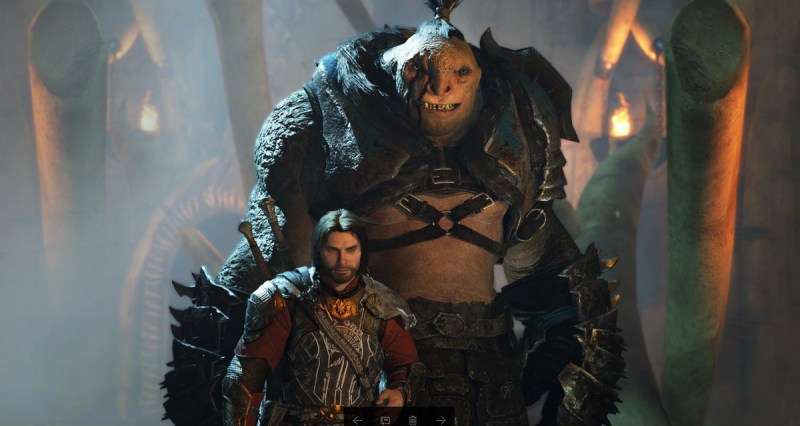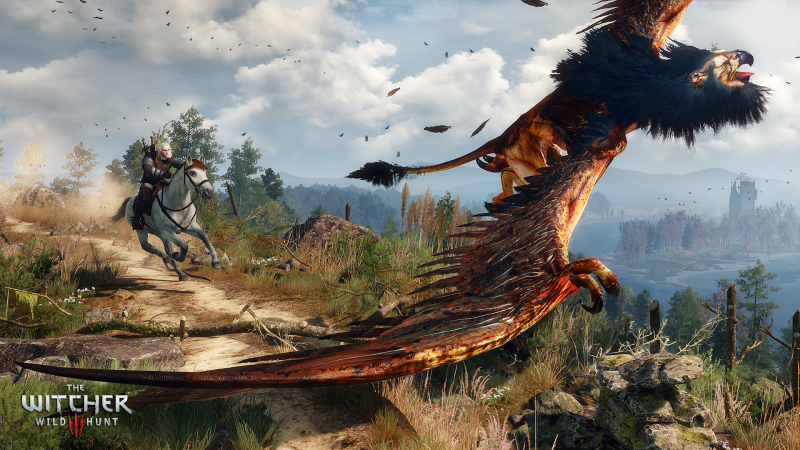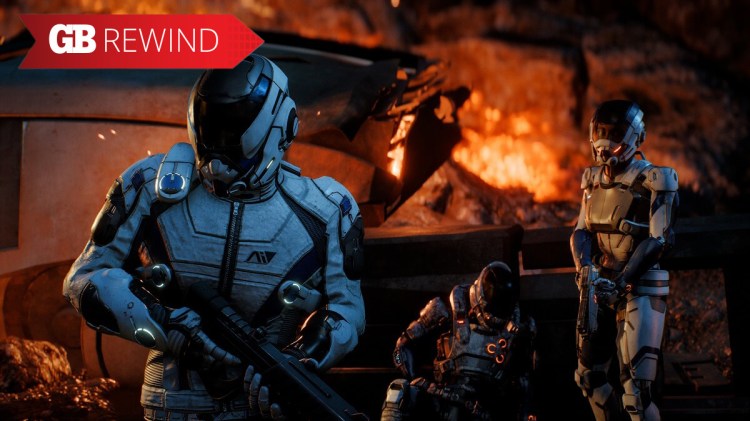One of the great debates of 2017 is the “death of the single-player game,” a conversation that flared up when EA cancelled Visceral’s untitled Star Wars action-adventure and shut down the studio, seemingly because its executives didn’t see how it could make as much money as FIFA’s Ultimate Team. But the discussion that ensued quickly turned muddy, as single-player games like Assassin’s Creed: Origins and Mario Odyssey got rave reviews, and this in a year that had also seen The Legend of Zelda: Breath of the Wild and Horizon: Zero Dawn, to name a couple of others.
But with a few exceptions, like Mario Odyssey and Bethesda’s releases this year, the names of the single-player games being cited in these aren’t just single-player games. They’re big open-world games, designed to take up player attention over the course of weeks or even months. That’s a far cry, pun intended, from the pedigree going into Visceral’s Star Wars, with their experience with Dead Space and Amy Hennig’s work at Naughty Dog. Those kinds of games — relatively linear single-player 8-12 hour action-adventures with constrained stories — are what seems to be endangered. And some of the methods games are using to replace those kinds of stories are pretty unseemly.
The impulse for more
Five years ago, I wrote about the “Rise of the Supergames” — the idea that games that couldn’t be completed in a smaller chunks were growing, and game culture needed to pay more attention to them. I was talking about genres like strategy, sports, and role-playing, the sorts of things you can play for months or years.
Unfortunately, the game industry actually seemed to agree, and it moved in this direction. (Damn monkey’s paw!)
June 5th: The AI Audit in NYC
Join us next week in NYC to engage with top executive leaders, delving into strategies for auditing AI models to ensure fairness, optimal performance, and ethical compliance across diverse organizations. Secure your attendance for this exclusive invite-only event.
Here’s what the problem is. See those three genres I mentioned? They all have long-term goals to them that keep players motivated. Build your team better in NBA 2K, or be able to build a major wonder in Civilization, or get your priest hooked up with the best gear in World of Warcraft. This is in addition to the short- and medium-term goals, as you do in every game, like not getting dunked on or seeing what the next plot twist is. But when you add a long-term goal, or meta-game, or higher-order concern, or whatever you want to call it onto that? That’s where the magic happens. It’s not just winning the match, it’s building a dynasty.
Or at least, that’s where the magic should happen. What the major publishers have done with a lot of their big open-world games is attached long-term goals that are motivating without being satisfying.
A dark power rises in Mordor
Let’s talk about Middle-earth: Shadow of War, the game that crystallized this for me, and one of those single-player games that received largely positive though not rapturous reviews. Shadow of War is the sequel to 2014’s Middle-earth: Shadow of Mordor, a relatively small-scale open-world game that won several Game of the Year awards (albeit in a down year). Mordor was larger than your typical blockbuster action-adventure, coming in around 20-30 hours, but still a self-contained experience with particularly good combat and open-world level design. What was most interesting about it was its “Nemesis System” in which your enemies were not nameless grunts, but instead orcs who possessed specific traits, could rise through the ranks, and become your rival … or your servant.

Above: A man and his troll, in Shadow of War
It was the last part — controlling orcs — where Mordor began to fall apart. In theory this would turn it into a semi-strategic game of roving orcs, letting you control Mordor with your tactics instead of your sword. In practice, it just made the game significantly easier as your character got more powerful. So Shadow of War, logically, tries to expand on that. More orcs, more traits for orcs, more regions that require killing and recruiting individual orcs, more options when you recruit your orcs, and big-ass sieges to cap it off. There’s also a much stronger itemization scheme, where you upgrade your inventory in a manner closer to a full-on RPG than Mordor had.
In other words, Shadow of War took a single-player blockbuster game with strong short- and medium-term goals plus a rudimentary meta-game and makes that meta-game robust, huge, and, as Stephen Totilo at Kotaku recently wrote, never-ending. It wants to use these long-term goals to create a supergame.
The problem is … these long-term goals aren’t very good. They feel like they’re tacked on in order to add #content more than that they’re strong goals. In a sports game your goal is to win a championship; in a strategy game your goal might be to build the most fantastic city you can think of. Those are goals with a narrative. In Shadow of War, and in a lot of these would-be supergames, the long-term goals are about ticking off all the quests in a list, or collecting all the items, or making a medium-sized number into a large number. Shadow of War never manages to bridge that gap, instead, it seems to assume that you’ll want to engage with the content it has primarily because that content is there.
Meanwhile, the poster child for ticking off quests to make a number go up might be 2017’s Mass Effect: Andromeda, the monumentally disappointing sequel to one of the most beloved RPG series of all time. Since Mass Effect 3, BioWare has included an overarching score in its games: Galactic Readiness, Inquisition Power, and in this one Andromeda Viability Points. Each of these has seen diminishing returns, distracting players from the plot, and increasingly, taking the place of emotional invest in plots. In classic BioWare games, the end of a quest saw a character-centered resolution; in its last two games, Andromeda and Inquisition, the end of a quest makes a number gets slightly larger. That’s a major downgrade.
Scorched earth psychology
Andomeda may have been one of the worst offenders, but it’s a trend through games: Increasingly, playing single-player games feels like you’re doing things in order to process the content, as opposed to inherently wanting to. The psychological concepts of intrinsic and extrinsic motivations are at play here: Intrinsic motivations are things that come from within (I want to see where this story goes!), while extrinsic motivations are rewards are imposed from outside (I get a loot box if I go up a level!).
Studies of these two concepts have shown a few important things. First, extrinsic motivation works great in the short-term, as everyone who’s played one more Overwatch match to level up and get a loot box knows. (Or had a job, but that’s less universal.) However, extrinsic motivation tends to backfire under two circumstances: First, it can become the primary motivation even when there would have been intrinsic motivation, and second, when the reward becomes less fulfilling than the perceived amount of work, people reject it more than they would even if they were doing it for free.
In other words, extrinsic motivation works in the short-term, but has a higher chance of backfiring in terms of making people feel compelled to play, instead of wanting to, and then getting angry when they don’t get the right rewards for their play. Does that, perhaps, sound like half of all video game controversies in the past few years?
Of course, it gets worse. Increasingly, major video game publishers are taking a page from mobile games and making the long-term motivators and rewards centered around monetization. In Shadow of War, perhaps the most cynical of these huge-world single-player games, the long-term player goals of better gear and better orc servants are both things that can be made simpler by acquiring loot boxes that have, you guessed it, orcs and gear. Loot boxes can be acquired by either grinding out arbitrary quests to get rewards or paying cash.
So it’s unsurprising that, when playing Shadow of War, I lost interest most quickly when I decided that I wanted to try to get better gear or level up my orcs, instead of just running around murdering orcs in the action-oriented game engine that should have been the actual game. The monetization becomes a crutch for bad game design. Much like an airline offers horrible service but offers the ability to bypass that awfulness by offering you a pricey upgrade to first class, Shadow of War presents a boring progression system but lets you loot box your way out of it.
That level of cynicism may or may not be the future of single-player gaming. EA may be rethinking a few things after the successive mistakes of Andromeda and Battlefront 2. But right now, the combination of excessive extrinsic motivations combined with an increasing push for microtransaction-based never-ending games-as-a-service lead to pretty toxic combination.
The ray of hope … isn’t
But Rowan, you may be saying, not every game does this! Just look at de facto Game of the Year winner Breath of the Wild, or The Witcher 3. Those do huge single-player open-world right!

Above: Geralt tracks a griffon to take it down in The Witcher 3.
And you’d be right, to a point. Certainly, despite my skepticism, The Witcher 3 has turned into one of my all-time favorite games (and I’ll probably love Zelda once I get a Switch). But I’m not sure exceptionally good games can cover up an overall trend. After all, Skyrim was exceptional, but its sales dominance may have influenced the fantastic, relatively linear BioWare RPGs to turn into Dragon Age: Inquisition and Mass Effect: Andromeda, whose open worlds made them significantly weaker than they could have been.
Openness also isn’t inherently a good thing, especially for games whose story — or more accurately, progression through a series of planned level — is important. See, when a level’s starting point and endpoint can be defined, story can be made stronger. An open game where a player merely has to get from one point to the next builds tension in a totally different fashion than a linear game. The former does so through interesting mechanics; it’s the story of the player. The latter can utilize story and emotion far more; making it the story of the characters and game world. (Just consider the difference between Mass Effect 3 and Andromeda to get what I’m saying here.)
And this is a process throughout single-player gaming. Most every major blockbuster sequel is bigger, not just in a way you’d expect from a sequel, but exponentially such. Dragon Age 2 was a third of the length of Inquisition; Breath of the Wild is the most open Zelda yet; Mario Odyssey has the biggest levels in Mario history; Shadow of War has six zones, where Mordor has two. The entire genre 10-hour action adventures is being carried pretty much entirely by Bethesda and Naughty Dog right now. The 30-odd hour cinematic RPG is pretty much dead, with the exception of a few European games like the recent ELEX.
Of course people are going to be unhappy about these styles of games apparently disappearing! Story-centered games centered on the intrinsic motivation of the player are being replaced by never-ending games built around the drive for extrinsic reward. That’s inauspicious, and news like Visceral’s closing only served as reinforcement for the fear that meaning is being replaced by content.
The trend in 2017 isn’t that single-player games are dying. It’s that instead of being a week’s worth of fun, they’ve become a month’s worth of chores.


